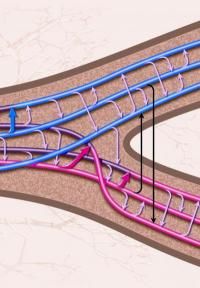
© Universal Studios"Are you telling me that you built a time machine ... out of a DeLorean?"
In the first
Back to the Future movie, all it took to travel through time was 1.21 gigawatts and a flux capacitor (packed into a DeLorean sports car for style points). Despite centuries of dreams and decades of bona fide research, flux capacitors remain beyond our grasp, as do any other time travel-enabling devices.
From a pure physics point of view, travel into the future is not at all impossible and in fact happens all the . . . time. With all due respect to Doc Brown, however, backward time travel stacks up as a much tougher proposition.
"We can travel at different rates to the future," said Seth Lloyd, a professor of quantum mechanical engineering at the Massachusetts Institute of Technology. "To go into the past and mess around with it, that's more controversial."
My watch or yours?For a real, everyday example of time travel, consider the satellites of the
Global Positioning System. Were it not for built-in calibrations, the GPS atomic clocks would gain 38 microseconds over terrestrial timepieces every day, throwing off their location accuracy by several miles. "Clocks on Earth tick a tiny bit slower than satellites out in space," said Lloyd.
The reason: time dilation, as described by Einstein's two theories of relativity. According to the special theory, the faster an object moves relative to another object, the slower it experiences time. For GPS satellites zooming around Earth at nearly 9,000 mph (14,000 kph), this effect cuts seven microseconds off their clocks daily (relative to clocks on Earth).
The second effect, explained by the general theory of relativity, involves gravity. Clocks closer to the center of a gravitational mass, such as Earth, tick more slowly than those farther away. GPS satellites orbit 12,500 miles (20,100 km) above the ground, and as a result have 45 microseconds tacked onto their clocks per day. The net result of the two relativistic phenomena is 38 microseconds, which engineers have accounted for with GPS technology.

